PESTS AND DISEASES OF FORESTRY IN NEW ZEALAND
Small Forests & Woodlots
A guide to conducting forest health assessments and sampling:
NON-BIOTIC DISORDERS
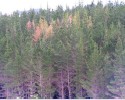 Some of the main non-biological disorders are related to weather, nutrient deficiencies and misuse of chemicals. Damage from these agents can easily be confused with insect and fungal disorders.
Some of the main non-biological disorders are related to weather, nutrient deficiencies and misuse of chemicals. Damage from these agents can easily be confused with insect and fungal disorders.
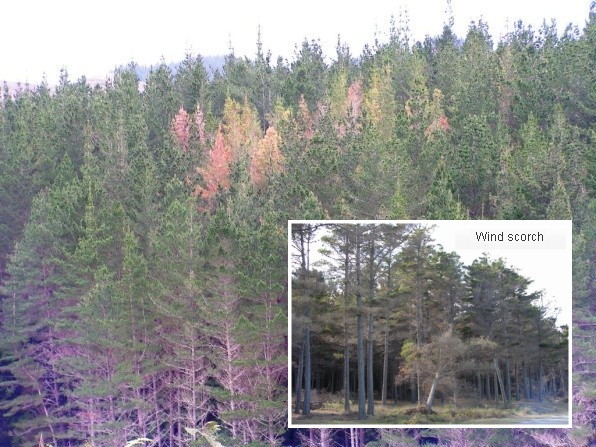
Weather
When assessing a disorder, first consider contributing factors other than a biological agent. Exposure, storm events, proximity to salt laden air, precipitation (too little or too much), frost.
Some common symptoms include damage to exposed edges or one side of trees only, most tender foliage only affected.
Association of symptoms with topographical features that might compound weather events, eg: dry ridges, silting or water-ponding.
Lightning strike
This weather phenomenon is one of the few abiotic events that produce a set of symptoms that mimic several potentially serious biotic forest health disorders, particularly in conifer forests. When the lightning strikes, a central tree or group of trees die quickly, then varying degrees of ill-health radiate out to other trees over time. These symptoms need to be investigated either by the forest owner or forest health experts.
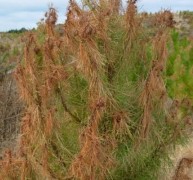
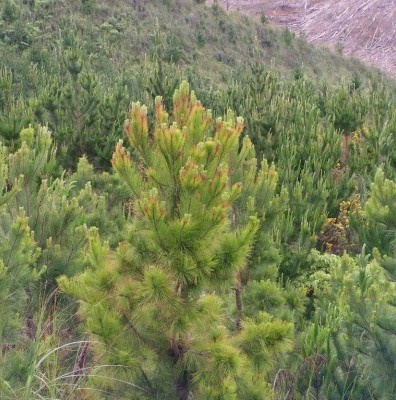 Chemical damage
Chemical damage
This usually comes from spray drift onto trees from adjacent paddock spraying or weed control on track edges. Hormone type sprays usually have a long term effect on pine and can result in years of malformation and die-back.
Nutrient deficiencies
Generally, nutrient deficiencies don't 'come on' suddenly like diseases, and will tend to affect a tree's foliage in an even manner such as needle tip yellowing of pine. Symptoms are often localised and may be associated with topography and/or soil types. Some deficiencies of elements such as boron will have symptoms and damage compounded by dry conditions.
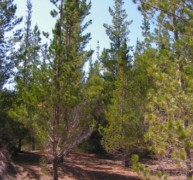
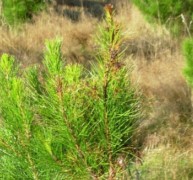


For a comprehensive guide to nutrient deficiencies and foliage sampling see:
FRI Bulletin No.97 Nutrient Deficiencies and Fertiliser Use in New Zealand Exotic Forests
by Graham Will.



